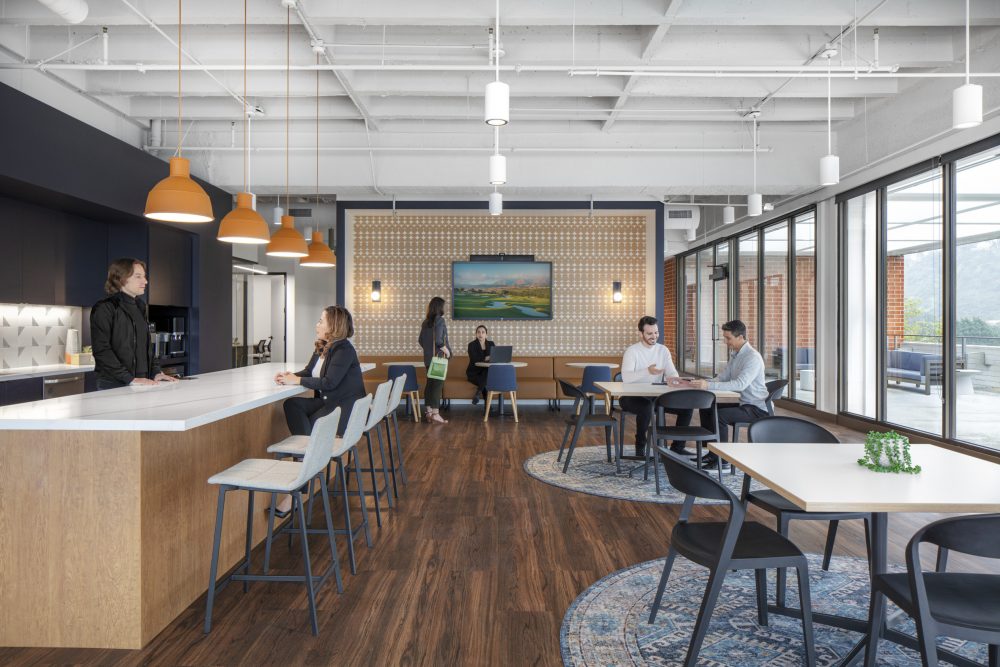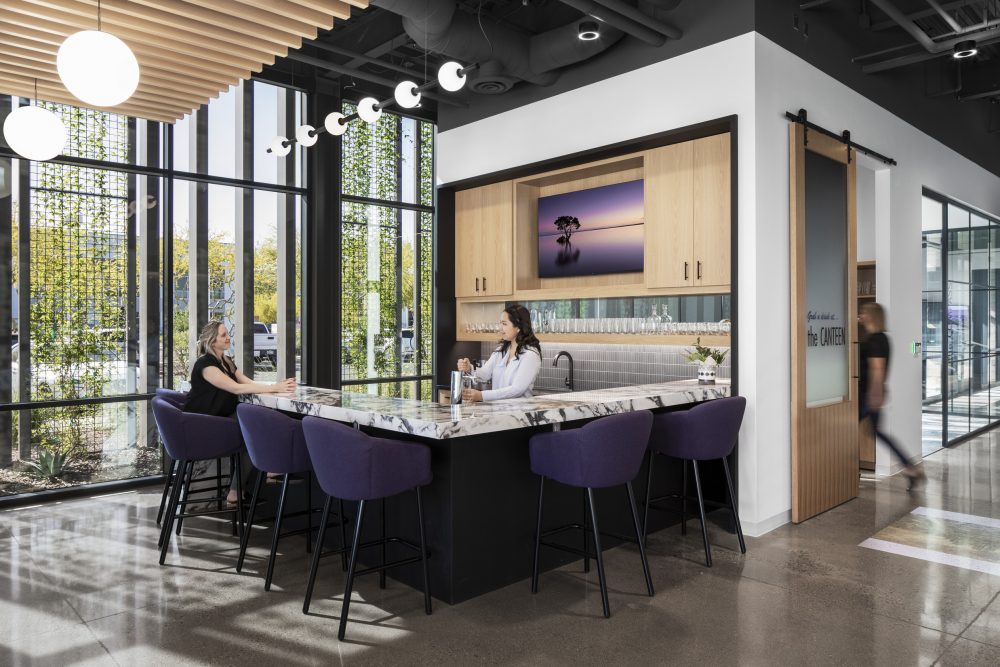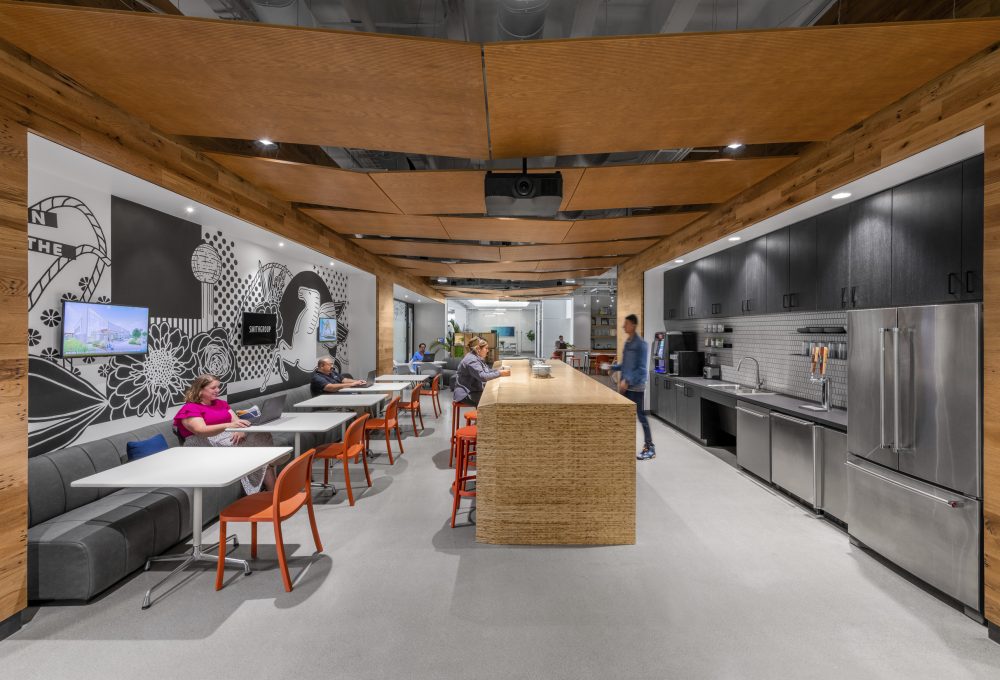Michelle Romero, Workplace Studio Leader at SmithGroup, outlines the essential elements for the workplace café to thrive. From caffeine and variety to technology and sound, the café is now the central hub of the office space.
The workplace café as an added amenity to drive social interactions is no new concept. Since the pandemic, they have been a critical space type for attracting people back to the office. For these spaces to be successful both financially and functionally, they have to be more than just a place where employees can hang out for an hour each day.

Allowing for flexibility in space is fundamental to today’s evolving workplace. Multi-use has become a key word when looking at down-sizing and shrinking a company’s real estate footprint. Because the “break room” is an essential program component for every office space it’s an easy target when it comes to re-thinking it’s purpose. The bustling coffee shop became the catalyst for transforming the break room into today’s work café. To be successful, this space requires variety. Think workspace meets lounge meets large meetings meets happy hour.
To accommodate multiple types of functions and uses within one space requires access to ample power sources and a variety of furniture that can be reconfigured. The ability to swiftly and easily remove lounge furnishings and replace them with, say, rows of chairs for large-scale meetings also requires convenient access to storage options for items not in use. To entertain, an island for food and drink is ideal. Layer in technology, sound, some adjustable light…and you’ve got yourself a great functional space.

But how do we draw people in? The other critical layer to the work café’s success is the human-centric element. It must evoke comfort, wellness, and inclusivity and should be centrally located and easily accessible to all employees. Setting the mood with comfortable furniture, color and music will provide a unique experience and reprieve from the open office.
The kitchen function is taking on more of a residential feel with panel ready appliances that disappear into the millwork and glass front beverage centers that provide a “help yourself” culture. Putting a spotlight on and providing nutritious food choices also empowers staff to maintain healthy lifestyles. Equally important, it underscores that employers are placing a new priority on employees’ well-being and lays the foundation for a more productive and happier work environment.

When all these components are provided, the effects go beyond the space. By encouraging employees to prepare meals in the work café, or bring in their take-out orders, companies can support sustainability efforts using reusable containers that reduce single use plastics, or through recycling and composting programs.
Keep in mind, the work café can also help employees relieve stress, providing a retreat and place for mental breaks that promote a well-balanced workday. These moments of reprieve help prevent burnout and screen fatigue while allowing people to maintain energy levels throughout the day, contributing to sustained productivity. These characteristics and initiatives can create a workplace where employees feel valued and motivated to stay, while also helping to attract new talent.

The work café is so much more than a bustling coffee shop, or just another space in your program. It can be a dynamic hub that enhances the employee experience, establishes a sense of community, supports healthy lifestyle choices, and enables productivity and camaraderie to soar.

All photos courtesy of SmithGroup.

